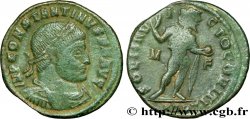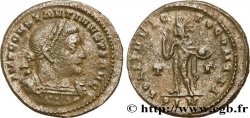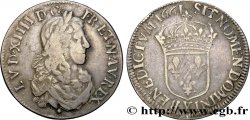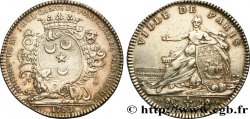Live auction - brm_361613 - CONSTANTINE I THE GREAT Miliarense léger
You must signin and be an approved bidder to bid, LOGIN TO BID. Accounts are subject to approval and the approval process takes place within 48 hours. Do not wait until the day a sale closes to register. Clicking on "BID" constitutes acceptance of the terms of use of cgb.fr private live auctions.
Bids must be placed in whole Euro amounts only. The sale will start closing at the time stated on the item description; any bids received at the site after the closing time will not be executed. Transmission times may vary and bids could be rejected if you wait until the last second. For further information check the Live auction FAQ
All winning bids are subject to a 18% buyer’s fee.
All winning bids are subject to a 18% buyer’s fee.
| Estimate : | 2 800 € |
| Price : | 2 300 € |
| Maximum bid : | 2 550 € |
| End of the sale : | 29 September 2015 15:10:15 |
| bidders : | 3 bidders |
Type : Miliarense léger
Date: 336-337
Mint name / Town : Trèves
Metal : silver
Millesimal fineness : 1,000 ‰
Diameter : 24 mm
Orientation dies : 6 h.
Weight : 4,51 g.
Rarity : R3
Coments on the condition:
Exemplaire sur flan large et bien centré des deux côtés, légèrement fendu à deux heures au droit. Très beau portrait de Constantin Ier. Revers inhabituel. Patine grise superficielle. A été nettoyée anciennement
Catalogue references :
Predigree :
Cet exemplaire provient du stock de Thierry Dumez et de la collection MG
Obverse
Obverse legend : CONSTANTI-NVS MAX AVG.
Obverse description : Buste diadémé, drapé et cuirassé de Constantin Ier à droite, vu de trois quarts en avant (A’b) ; diadème lauré et gemmé.
Obverse translation : “Constantinus Maximus Augustus” (Constantin le grand auguste).
Reverse
Reverse legend : CONSTANTINVS AVG // SMTR.
Reverse description : Quatre enseignes militaires.
Reverse translation : “Constantinus Augustus” (Constantin auguste).
Commentary
Rubans de type 3 aux extrémités bouletées. Diadème lauré et gemmé, formé de cabochons ronds. Dans la seconde édition du Cohen en 1888, ce “médaillon” d’argent est estimé à 100 francs or correspondant à l’estimation d’un aureus rare du IIe siècle. Le RIC VII, p. 222 recense trois exemplaires : celui du British Museum, pl. 5 (autres coins), celui de la collection Bement, Ars Classica. VIIII, n° 1477 et vente Hess 207, n° 1300.







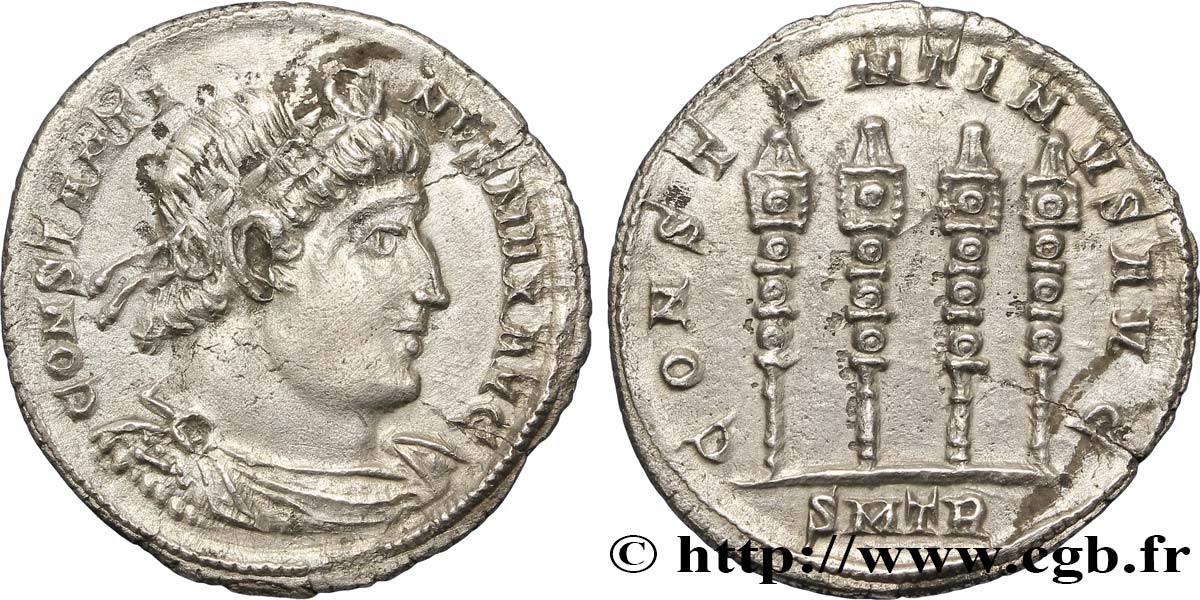
 Report a mistake
Report a mistake Print the page
Print the page Share my selection
Share my selection Ask a question
Ask a question Consign / sell
Consign / sell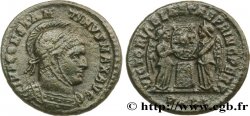
 Full data
Full data

